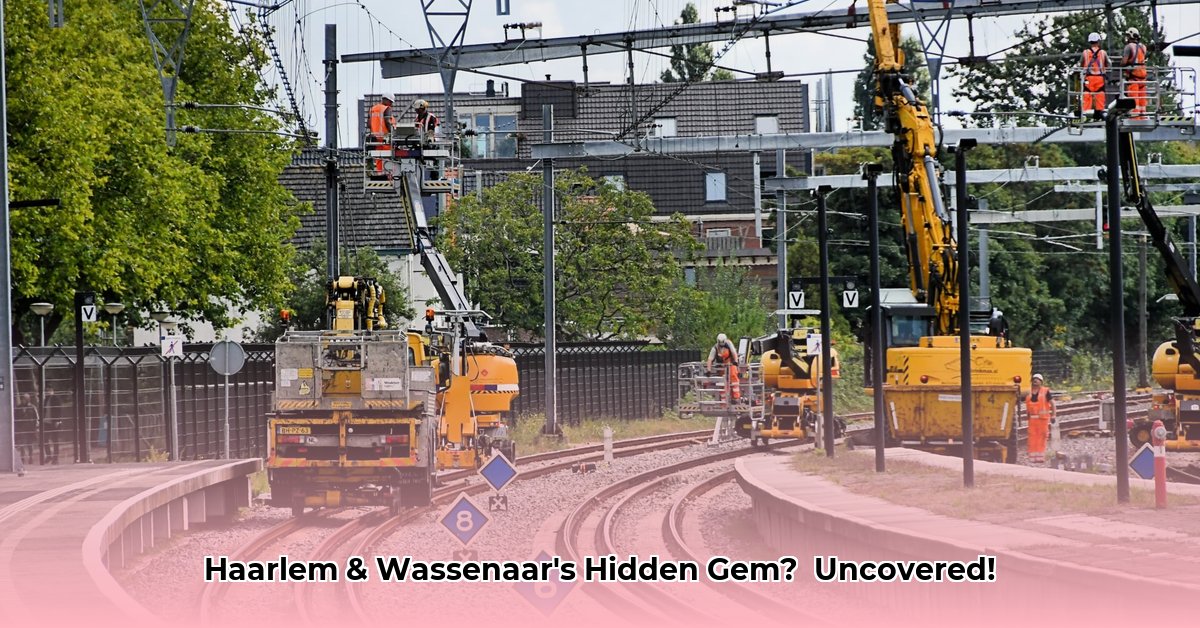
A Region Without a Name: Defining the Area Between Haarlem and Wassenaar
Eish, trying to pin down a single name for the area nestled between Haarlem and Wassenaar? It's like trying to catch smoke! There isn't one official moniker everyone agrees on, making this region a bit of a geographic puzzle. But this lack of a clear label only adds to its intrigue. This article aims to shed light on this captivating stretch of land, exploring its diverse landscapes, bustling economy, and the perspectives of various stakeholders. We'll delve into everything from the vibrant Bollenstreek (bulb region) to the administrative complexities that define—or rather, don't define—this unique area.
A Patchwork of Landscapes
Imagine a vibrant tapestry woven from diverse threads: the bright colours of the Bollenstreek, renowned for its dazzling displays of tulips, daffodils, and hyacinths; the quieter residential neighbourhoods edging towards the bustling towns of Haarlem and Wassenaar; the serene farmlands scattered with charming traditional houses; and pockets of nature reserves offering tranquil escapes. This beautiful blend of urban and rural, agricultural and industrial, is what makes this region so unique. It's a living landscape, constantly shifting and evolving – a true testament to the dynamic interplay between nature and humanity. Isn't it fascinating how such a relatively small area can hold so much diversity?
The Economic Engine: More Than Just Bulbs
The Bollenstreek, that explosion of colour every spring, is undoubtedly the area's most famous feature. The cultivation, processing, and export of millions of bulbs annually contribute significantly to the Dutch economy. But it's not just about flowers; tourism plays a huge role, with hotels, restaurants, and transport systems bustling to cater to the constant flow of visitors. Then there's the everyday economic life of the residential areas, with their own unique mix of businesses and industries. All these sectors are interconnected, their fates intertwined, creating a vibrant and complex economic ecosystem. How do you think climate change might impact the bulb industry and the region overall?
Administrative Boundaries: A Complicated Jigsaw
Trying to understand this area is like tackling a jigsaw puzzle with some missing pieces. The administrative boundaries – municipalities and provinces – don't always neatly align with the geographical features or economic activities. This makes defining the area even more challenging. This administrative complexity highlights the need for a more holistic, integrated approach to planning and management within the region. What are the implications of these fragmented administrative structures for regional development?
Stakeholder Perspectives: Different Views, Shared Goals
Different groups view this area through their own unique lenses. Let's look at their perspectives:
GIS Professionals: These experts require precise data and a consistent naming convention to effectively map the area. A standardized name would streamline their work. Can you imagine the challenges they face without a unified nomenclature?
Tourism Boards: They need a catchy, memorable name to market the area effectively. How can they best represent the diversity of this region in their marketing campaigns?
Local Governments: They need clear boundaries for effective planning and resource allocation. A cohesive approach to development is crucial. How do you see the different municipalities working together to address shared challenges?
Researchers: Academics need consistent terminology for comparing data and conducting meaningful research across different time periods and projects. What future research could help us better understand this complex region?
Conclusion: A Region Worth Exploring
The lack of a single definitive name for the area between Haarlem and Wassenaar underscores its unique and complex nature. It's a dynamic region, shaped by the interplay of agriculture, tourism, urban development, and the intricate web of administrative boundaries. Further research is essential to fully understand and ultimately define this fascinating area. It’s a region that demands a deeper understanding, not just for its economic importance but also for its rich natural beauty and fascinating cultural context. What are your thoughts on how best to approach further study of this region?
Key Findings:
- The area lacks a single universally accepted name.
- It features diverse landscapes and economic activities.
- Administrative boundaries add to the complexity of defining the region.
- Different stakeholders have unique perspectives and needs.
- Further research is needed to fully understand the area.